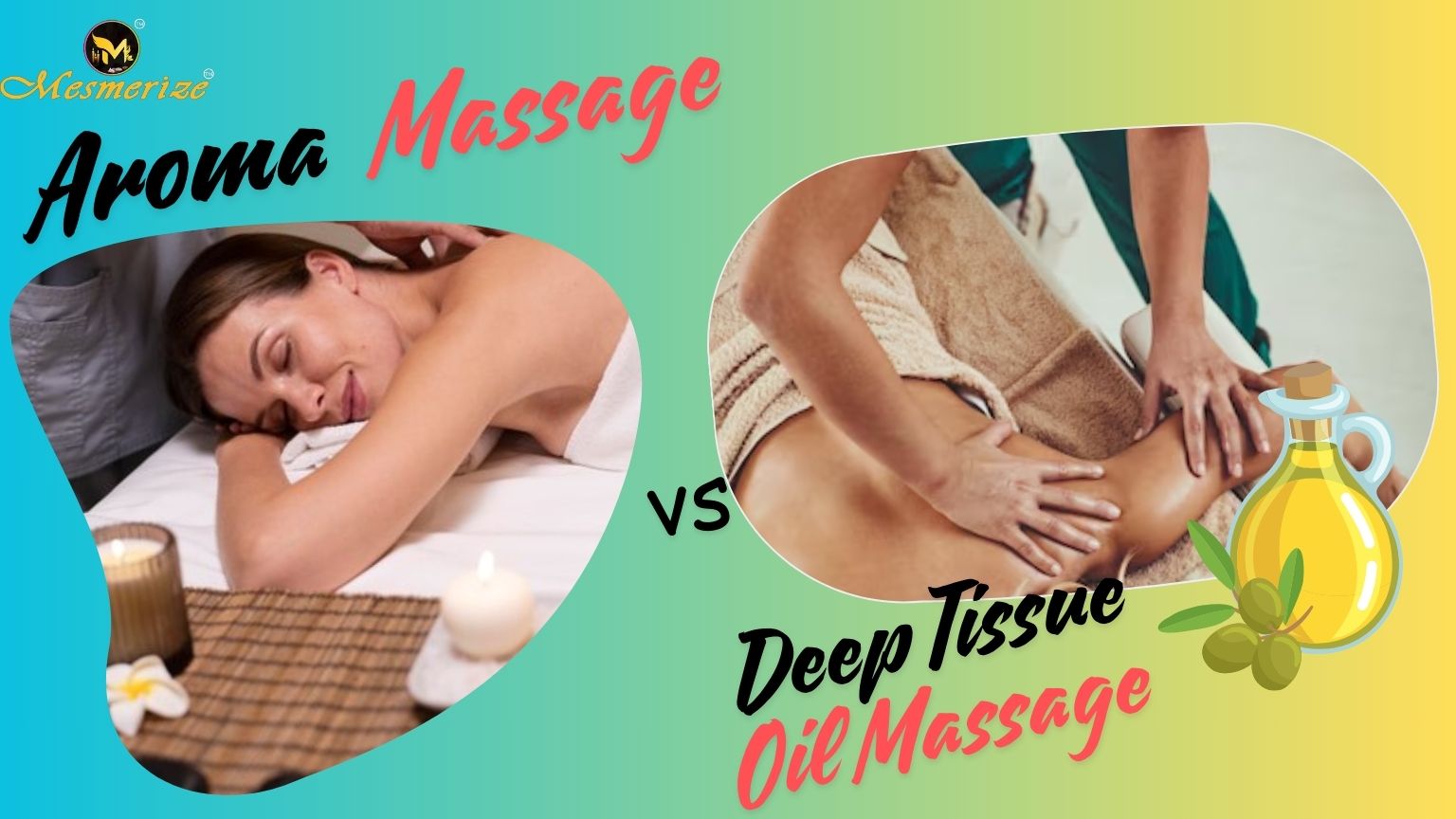When it comes to spa treatments, you can find plenty of options. Each of these has its own unique benefits and experiences to offer. Deep Tissue Oil Massage and Aroma Massage are two popular choices. Find out which one might be better suited for spa enthusiasts, based on various factors.
1. Intensity of pressure
Deep tissue oil massage is known for its firm and intense pressure. It targets the deeper layers of muscles and connective tissues, to release tension and knots. This type of massage is ideal for individuals who prefer a stronger touch and require specific attention to problem areas.
On the other hand, aroma massage typically involves lighter pressure and gentle strokes. The pressure is more moderate, making it suitable for those who prefer a gentler approach or have a lower pain threshold.
2. Massage techniques
A wide range of techniques such as kneading, friction, and deep pressure, are used in deep tissue oil massage. It can release muscle tension and promote healing. The therapist may use elbows, forearms, and even own body weight to apply targeted pressure to specific areas.
Aroma massage, on the other hand, incorporates a combination of gentle strokes, effleurage, and rhythmic movements. These ensure a sense of relaxation and harmony. The therapist focuses on creating a soothing environment with aromatic oils and gentle techniques.
3. Purpose and benefits
Deep tissue oil massage is primarily aimed at addressing specific muscular issues, such as:
- Chronic pain,
- Muscle tension, and
- Sports injuries
It can help improve flexibility, increase range of motion, and promote post-workout recovery. This type of massage is particularly beneficial for athletes or individuals with chronic muscular conditions.
Aroma massage, on the other hand, focuses on creating a sense of relaxation, reducing stress, and balancing the mind and body. The use of aromatic oils adds an extra element of therapeutic benefits, as different oils have specific properties that can calm, uplift, or energize the senses.
4. Types of oils used
Deep tissue oil massage typically uses oils that are suitable for deep muscle work and provide lubrication for the therapist’s hands. These oils are often unscented or have a mild fragrance. The focus is more on the therapeutic benefits of the massage techniques rather than the aroma of the oils.
In contrast, aroma massage utilizes a variety of essential oils known for their therapeutic properties. Lavender, chamomile, eucalyptus, and citrus oils are commonly used to induce relaxation, uplift the mood, or provide other specific benefits.
5. Duration of treatment
Deep tissue oil massage sessions are typically longer, ranging from 60 to 90 minutes, depending on the client’s requirements and the extent of muscular issues that need to be addressed. The longer duration allows the therapist to focus on specific areas of tension. It works deeply to release knots and adhesions.
Aroma massage sessions are often shorter, ranging from 30 to 60 minutes. The focus is on providing a relaxing experience rather than addressing specific muscular issues. The shorter duration makes it a convenient option for people who are short on time or seeking a quick relaxation session.
Ultimately, both. Deep Tissue Oil Massage and Aroma Massage can offer a blissful spa experience for spa enthusiasts. The choice between the two ultimately depends on individual preferences, needs, and desired outcomes.
























